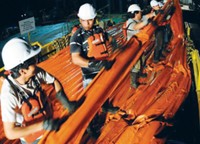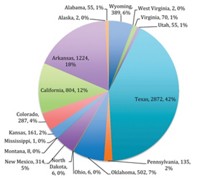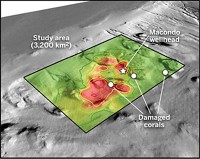Advertisement
Grab your lab coat. Let's get started
Welcome!
Welcome!
Create an account below to get 6 C&EN articles per month, receive newsletters and more - all free.
It seems this is your first time logging in online. Please enter the following information to continue.
As an ACS member you automatically get access to this site. All we need is few more details to create your reading experience.
Not you? Sign in with a different account.
Not you? Sign in with a different account.
ERROR 1
ERROR 1
ERROR 2
ERROR 2
ERROR 2
ERROR 2
ERROR 2
Password and Confirm password must match.
If you have an ACS member number, please enter it here so we can link this account to your membership. (optional)
ERROR 2
ACS values your privacy. By submitting your information, you are gaining access to C&EN and subscribing to our weekly newsletter. We use the information you provide to make your reading experience better, and we will never sell your data to third party members.
Environment
Plumes Finger Oil Spill
Geochemistry: BP leak is behind undersea oil plumes, isotopic analyses confirm
by Elizabeth K. Wilson
August 2, 2010
| A version of this story appeared in
Volume 88, Issue 31

New research that has not yet been submitted for publication in a peer-reviewed journal provides definitive evidence that giant plumes of oil lurking undersea in the Gulf of Mexico have been produced during BP's Deepwater Horizon oil disaster, a group of university scientists announced on July 23. On the same day, government scientists confirmed the location and extent of the plumes.
Despite the oil company's repeated denials that the spill caused underwater plumes, scientists at the University of South Florida (USF) reported that isotopic comparisons of the undersea plume oil with samples from BP prove that the oils came from the same source. The plumes represent a great hazard for marine life because the toxic oil takes the form of microscopic, easily ingestible droplets.
"What we have learned completely changes the idea of what an oil spill is," David Hollander, the USF chemical oceanography professor whose lab performed the isotopic analysis, said in a press release. "It has gone from a two-dimensional disaster to a three-dimensional catastrophe." USF spokeswoman Vickie Chachere added that the researchers are preparing to submit their report for publication.
An oft-used method for determining the origins of geochemical samples provided the smoking gun. In this method, known as compound-specific isotope analysis, the carbon-isotope ratios of hydrocarbons in oil give unique signatures related to the compounds' source and history. The USF analysis was made possible after BP agreed to provide samples of oil from the well for comparison.
Christopher T. Yarnes, an engineer at the University of California, Davis, Stable Isotope Facility, notes that compound-specific isotope analysis is a useful method for comparing the sources of geochemical samples. However, he says, the accuracy of the method "depends on knowing variations between sites and depths."
Also on July 23, the National Oceanographic & Atmospheric Administration released a peer-reviewed report detailing the location and size of the plumes. Although scientists had predicted that plumes would form after the spill, such plumes have been difficult to locate and characterize.
Using fluorescence spectroscopy, which detects organic substances, NOAA researchers found evidence for oil in water at more than 200 stations within a few dozen miles of the Deepwater Horizon well. Their results show that the plumes are between 3,300 and 4,300 feet deep. In these same areas, the group also found reduced levels of dissolved oxygen, which is vital for marine organisms.
Since the April 20 Deepwater Horizon well explosion, which killed 11 workers, millions of gallons of crude oil have gushed into the Gulf of Mexico. Earlier this month, BP workers placed a cap on the broken well pipe. The company hopes the cap will remain intact until the well can be permanently closed off.
With the amount of oil leaking into the Gulf now substantially reduced, scientists report that oil on the water's surface is beginning to dissipate. However, questions remain unanswered about the fate of the subsurface oil plumes.





Join the conversation
Contact the reporter
Submit a Letter to the Editor for publication
Engage with us on Twitter